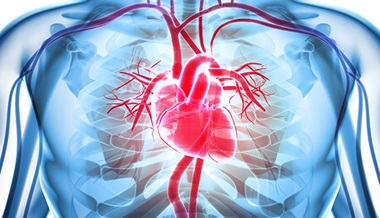Mitral Valve Repair
Featured Expert:
Mitral valve disease occurs when the valves in the upper heart chamber don’t open or close properly. This can cause blood to flow backward out of the heart (regurgitation) or can restrict blood (stenosis) to the main pumping chamber of the heart (left ventricle).
Mitral valve repair is a surgical procedure that corrects the mitral valve so it functions properly.
Johns Hopkins mitral valve repair expert and co-director of the Heart and Vascular Institute, James Gammie, M.D., explains what to expect during a mitral valve repair procedure.
What is the mitral valve, and where is it located?
The mitral valve is located inside the heart between the left atrium and left ventricle of the heart. It consists of two flaps of tissue called leaflets. This valve allows blood to flow from the lungs to the left atrium and into the left ventricle.
Once blood reaches the left ventricle, the oxygenated blood is pumped to the aorta, which pumps blood throughout the body. When the heart squeezes, the two leaflets of the mitral valve snap shut and prevent any backflow of blood.
What is mitral valve disease?
Mitral valve disease develops when the valve leaks, known as mitral valve regurgitation, or when the valve becomes narrow and obstructs forward blood flow, known as mitral valve stenosis. Mitral valve disease prevents blood from flowing properly through the heart and body.
There are three types of mitral valve disease:
Mitral valve prolapse
Mitral valve prolapse occurs when one or both leaflets of the mitral valve become enlarged and turn inward. In some cases, this causes blood to flow backward into the heart (mitral valve regurgitation).
Mitral valve regurgitation
Mitral valve regurgitation occurs when the valve doesn’t close tightly, allowing blood to leak backward into the left ventricle. This causes the heart to work harder to pump blood and may, over time, weaken the heart muscle.
Mitral regurgitation can be either primary or secondary.
- Primary mitral regurgitation is the more common form of the disease. It is caused by elongation or rupture of the chordae tendinae: an array of cord-like structures that support the two mitral leaflets. When this happens, the valve does not close properly, and it leaks.
- Secondary or functional mitral regurgitation is a dysfunction of the left ventricle that causes blood to flow backward. Secondary mitral regurgitation can be caused by a heart attack or chronic heart failure with normal leaflets.
Mitral valve stenosis
Mitral valve stenosis occurs when the valve doesn’t open properly and is too narrow. This can cause a lack of blood flow to the left ventricle of the heart.
Symptoms of Mitral Valve Disease
Some people may not experience symptoms of mitral valve disease until it becomes severe.
Symptoms of mitral valve disease may include the following:
- Shortness of breath
- Arrhythmia (abnormal heart beat rhythm)
- Fatigue
- Heart murmur (abnormal sound from the heart)
- Swelling in feet and/or ankles
Call 911 or go to the ER: If you have heart problems such as chest pains, dizziness, shortness of breath or sudden numbness, get help immediately.
What is a mitral valve repair?
Mitral valve repair surgery consists of several techniques to repair the valve depending on the type of mitral valve disease and severity of your condition. “Mitral valve replacement may be required if the mitral valve is severely damaged. Mitral valve repair surgery is more commonly performed,” explains Gammie.
How can I prepare for mitral valve repair surgery?
Before the procedure, your doctor will perform a thorough physical exam, blood test and medical history review to determine if you are healthy enough to undergo surgery. Your doctor will explain the procedure, risks and recovery with you. You may be asked not to drink or eat eight hours before surgery or after midnight.
How is mitral valve repair surgery performed?
While you are under anesthesia, your surgeon will make a small skin incision on your chest, opening the middle of your chest at the breastbone (sternum) to access your heart. “Depending on the severity and type of mitral valve disease, surgery may include removing excess tissue from the valve and reconnecting or separating the leaflets of the mitral valve,” says Gammie.
Your surgeon may tighten the valve by performing the following techniques:
- Annuloplasty: During an annuloplasty, the ring around the mitral valve, called the annulus, is tightened or reinforced to reshape the valve so it can function properly.
- Mitral Valve Clip: A small metal device called a mitral valve clip can be inserted through a catheter from an artery, leg or the groin to the heart. Your surgeon can use the clip to reshape the mitral valve. This type of procedure is considered minimally invasive, and may be used for patients who are at a high risk of complications from open heart surgery.
What is the recovery process after the procedure?
After the procedure, you will be sent to the intensive care unit for monitoring, usually for the first 24 hours, and then transferred to the telemetry unit for the remainder of your hospital stay. You may remain in the hospital for several days depending on your recovery and the severity of the mitral valve disease. Recovery includes weight restrictions, and your doctor will advise when it’s OK to resume normal activities, usually after a few months following surgery.
Johns Hopkins Cardiac Surgery

Johns Hopkins cardiac surgeons provide a full range of traditional and minimally invasive cardiac surgical services throughout the Baltimore and Washington, D.C., metropolitan areas.






